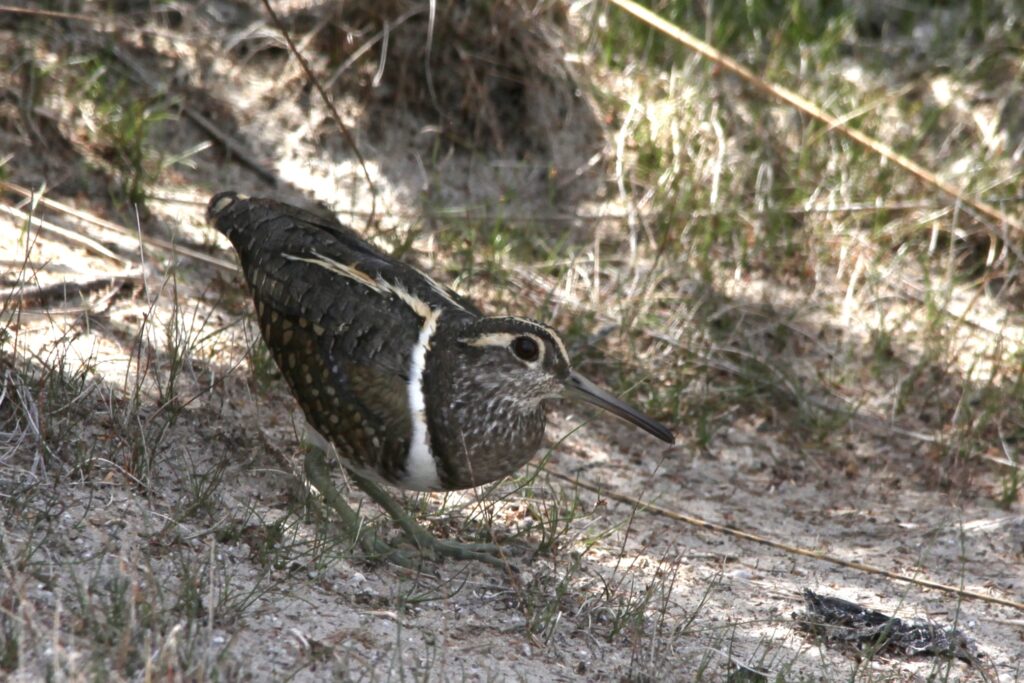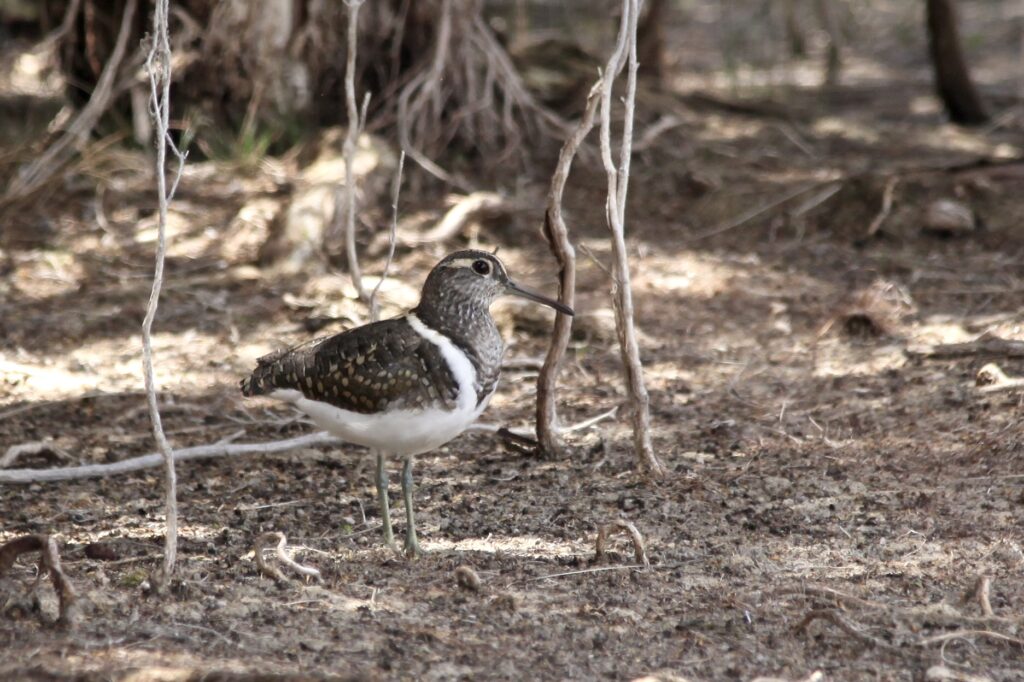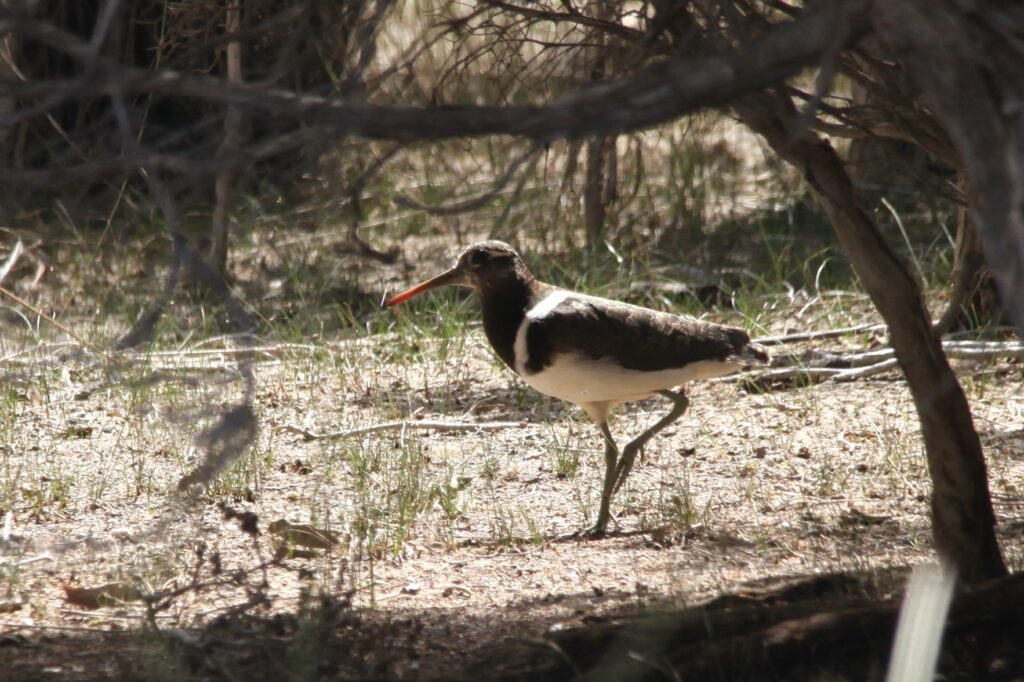Exciting records of the rare Australian Painted Snipe in the Lower South-East of SA
During Nature Glenelg Trust’s annual Wetland Bird Survey of Lake Hawdon North in November the weather was wonderful, the abundance of birds plentiful and the lake had far-reaching inundated mudflats. While teams were split up, most of the covered ground that day surprised us with a diverse array of shorebirds and waterfowl, to the delight of all participants. When word came out that an experienced bird identifier and member of the team had recorded an elusive Australian Painted Snipe (Rostratula Australis), the first one recorded in South Australia in a few years, spirits were raised even higher as the day became more successful.
My personal first observation of an Australian Painted Snipe that day was a debatable one. There was a bird certainly, it was sized like a snipe (think of a Magpie-Lark, but a bit more plump and with longer wings), and it flew sort of straight (this is a notable difference to Latham’s Snipe, which flush in a zigzag pattern). However, dusk was approaching, which made its pied colour scheme indiscernible, and… well… that’s how it goes sometimes.
As an opportunistic twitcher and a hobby photographer, the encounter was not satisfactory. However, having a camera with a telescopic lens, I figured a photographic record of the Painted Snipe in South Australia could be of some scientific value. Finding the time to go back into the wetland wasn’t as straightforward as hoped. As water levels in lakes across the Lower South-East were quickly dwindling it pushed me and my companion to make the trip on the morning of my birthday, the 27th of December.
What a birthday surprise it was, as we had not set foot into the lake boundary for more than half a minute, when three individual Australian Painted Snipe flushed up from the same spot, landing in various locations ten to thirty meters ahead. Luck would have it that these individuals were not willing to give up their patch, and with a touch of stealth allowed us to get close enough for an impromptu photoshoot. While one snipe was not identified, the other two were a male and a female.
Water levels had dropped as expected but after our encounter, which amazingly lasted over five minutes before all three birds had hidden themselves, it turned out that our entry point contained most of their suitable habitat left within the lake boundary. The rest of the vegetated mudflats were left exposed, dry, and cracked by the early summer heat.
The deeper parts of the lake were occupied by sparsely scattered groups of roosting sandpipers and stint. Fairy tern and some Royal Spoonbill were actively foraging. But while tens of thousands of South Australia’s iconic waterbirds moved on to fresher pastures, three Painted Snipe deemed this lake’s Gahnia wetland one of the best in the state.
The Australian Painted Snipe is nationally vulnerable and endangered in the State as they have been fighting a losing battle against human development. This 2023 article in the Guardian cites an estimation of merely 340 individuals remaining, describing the Snipe as a ‘near-mythical’ bird! In our region specifically, their decline has been influenced by the draining of extensive patches of their suitable habitat. While these Snipe will now presumably have moved on to wetter areas for the rest of the year, for me, records like this are what makes the hard work we do for them and others 100% worth it. These records remind us that when the right habitat is provided, even one of Australia’s rarest species of bird can return to our wetlands.



